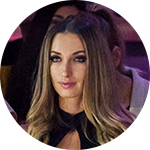- Zombie formalism in art today
- Artistic morphology went wrong

- 6 February '19


by Alina Livneva
6 February '19Zombie formalism in art today
Art movements have been progressing in exciting and unpredictable ways for the past century. Inventions of many exceptional artists or collectives gathered followers, becoming what we consider art schools today, greatly affecting all around them, and then diluting as associated derivative talents increased. The younger performers would protest against the latter, and the trend would fade into history. This occurred during the 1950s with the Impressionists, Post-Impressionists, Fauvists, and Abstract Expressionists. In each scenario, the only really artistic work took the lead.
It is a mutual and popular feeling in our time that there is nothing entirely fresh and unique that can be created. The end of history is the end of the modernist concept of development, and the post-history period brought reuse and parody to the table. When we take a brief look at art history before our century, we see that it has always relied heavily on the revolutionary and innovative spirits who have transgressed the boundaries set by their forefathers. When abstract art revolutionaries presented their initial works, they struggled against bourgeois preference and traditional value systems. Abstractionism was imaginative and unique, daunting for audiences who were more than often repulsed by it. But the vanguard ceases being just that after so many people have accepted it, and the defeat of the once-revolutionary art scene was unavoidable. But because there is nothing innovative to be done in our era, there is a growing trend towards the resurrection of past initiatives, whether we call it power, reproduction, emulation, replication or mirror image, as described by art historian and curator Robert McIntosh.
Most of the art being produced today is powered by the demand, and in particular by the not quite intelligent speculator-collectors who leverage on their affluent relations, making them purchase the same kind of art.
The artists here are just part of the issue. Most of them behave in honesty, do whatever they want, and afterward sell it. But at least many of them are culpable, catering to hungry, elevated-risk, value-averse investors anxious to be part of a quickly expanding lucrative industry. It is called Mild Abstraction, Neo-Modernism, M.F.A. Abstraction, and Crapstraction. We like the term made up by critic Walter Robinson: Zombie Formalism.
This work is decorative-friendly, particularly in a contemporary apartment or home. It feels "brainy" and looks like it's cool, even though it does not provide any insight into anything. Everything that is achieved in haggard shades of gray, uninventive used in digital media ape, or in something homespun or deteriorated. All this painting, packed with self-conscious commentaries on fashion, recycling, ecology, reproduction, abstract or nature, employs the same language as in smudging, stains, spray paint, flecks, splashes, near-monochromatic fields, silk screening or pottering. Edge to edge, geometric or biomorphic, irregular lines, moirés and rows, ovular forms and stripes with maybe some collage, are de rigueur. Longitudinal bars also play a role. This would say to us, 'I'm like a painting, I know, I'm not like anything like Takashi Murakami and Jeff Koons.' Many of this product are just painters who play scales, exercise fingers, without the wit or the relation that makes music. Actually, it's the Muzak sound, blending in.
Galleries almost everywhere are abundant in these wallpaper looking canvases, imitating the works of past influences. The art fairs are overflowing with litter alike. Such artists are mimicking the good old days of creativity.
The work is decorator-friendly in a contemporary apartment especially. It feels “ok-ish” however offers no insight into anything at all. It’s all done in shades, deployed in uninventive arrangements. The idea is to tell us they can paint. Much of this work lacks the music. Instead, the visual is blending in.

Most of the Zombie Formalism feels pretty much the same for the person in reality as it does on iPhone or Instagram. There is a lack of intelligence, conceptual presence, no complications, and no remarkable visual or creativeness. It's designed for business. Just about anyone who paints like that would have gone through the art school. You can sense the views of their instructor developed in the '60s, and the education handed on is one that lacks everything an artist is supposed to have.
Finally, we have to wonder, is all abstract contemporary art so terrible? There are, of course, those artists who do their job adequately. Trendsetters or so-called taste-makers have built chaos in the art market for financial purposes, and it's coming to an end. But we have to question ourselves, are the artists to be held accountable? After more than a decade, the argument is still in chaos, so we'll only have to see how circumstances will unfold in the future and if the output of zombie formalist art will decrease if the climate shifts in the art market.
The scariest part of this phenomenon is that even great artists who paint this way get lost in the avalanche of parody complacency and mechanical art. Going to exhibitions or galleries is becoming less like delving into unique voyagers and much more like going to department stores in which everything is familiar. My assumption is that if and when capital begins to fall from the art market again, the underside will disappear. Everyone would suddenly avoid buying and making the kind of artwork that was at the time the alleged educated response.


